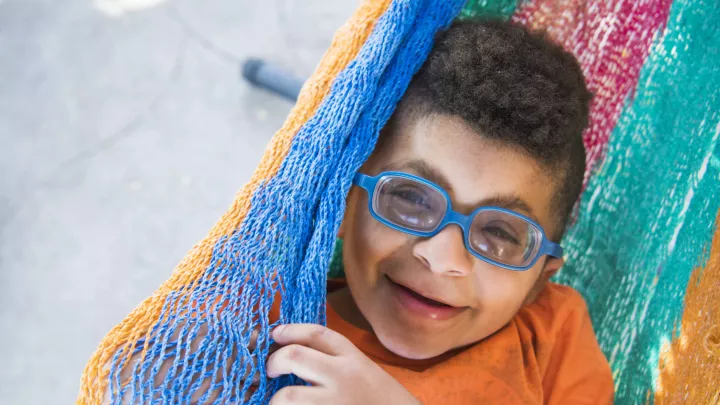Voiding Improvement Program
Lower urinary tract and pelvic floor dysfunction are common issues in children. They can cause urinary accidents, pain during urination, frequent urination or an urgent feeling that you need to urinate. Doctors refer to these problems with urination as voiding dysfunction.
Voiding dysfunction usually does not cause serious medical issues, but it can cause high levels of stress. With help from specialists in our Voiding Improvement Program, children can regain their well-being and confidence as they overcome these issues.
Voiding Improvement Program: Why Choose Us
At Children’s Hospital Los Angeles, families have access to one of the top-ranked pediatric urology programs in the country. We offer compassionate support and comprehensive treatment for all types of voiding issues.
With our program, you and your child experience:
- Comprehensive team: Our multidisciplinary team of skilled doctors, physician assistants, nurses and clinical psychologists works together to provide complete care for your child. When needed, your child also receives seamless care from other specialists at CHLA.
- Child-friendly environment: Our team uses age-appropriate games and activities during treatments. This approach keeps children engaged and relaxed so they can learn to void effectively. As pediatric providers who work with children every day, we create an atmosphere of care that decreases fear and anxiety.
- Personalized treatments: The best enuresis treatments focus on your child’s physical and emotional needs. In our program, our experts customize your child’s care after an evaluation. You receive a detailed plan that includes home care and information about the voiding dysfunction.
Voiding Conditions We Treat
Our pediatric urology team specializes in voiding dysfunction and the issues that often occur with it. We treat:
- Enuresis (daytime or nighttime wetting or accidents) in children who are potty trained
- Underlying causes of repeated urinary tract infections (UTIs) in children
- Urinary frequency and urgency in children
- Constipation in children
Diagnosis for Enuresis and Dysfunctional Voiding
The right diagnosis is the first step to helping your child overcome voiding dysfunction. Our innovative tests and tools make accurate diagnoses possible. Learn more about our approach to pediatric urology diagnosis and treatment.
Voiding Dysfunction Treatments
The most successful voiding dysfunction treatments for children involve a customized approach. Our expert team determines the underlying cause of the voiding issue to give your child a comprehensive plan. We base this plan on your child’s age, health history and unique needs.
Some treatments we offer in our clinic include:
Computer game-assisted biofeedback
Biofeedback is a noninvasive treatment that uses small electrodes (sensors) that stick on the skin. The electrodes send signals to a computer to help children recognize when they are using certain muscles.
We use biofeedback to help children become aware of the pelvic floor muscles they use when they urinate. Often, children who have both daytime and nighttime wetting can’t relax their muscles when they sit on the toilet. Sometimes children also leak urine before they reach the toilet because they cannot contract these muscles.
Biofeedback helps children regain control of their pelvic floor muscles. With good muscle control, children can make it to the toilet in time and empty their bladder completely.
In some cases, we connect a child’s electrode stickers to a fun and engaging computer game. The game teaches children to identify and control their pelvic floor muscles. After about six sessions, children usually learn to achieve dryness.
Counseling on healthy toileting practices
The right kind of toilet training sets a child up for lifetime success. We teach children timed voiding (bathroom trips) and discuss the proper way to sit on the toilet. Our comprehensive approach teaches children how to urinate properly, which helps prevent future UTIs.
Pelvic floor exercises
When children cannot relax their pelvic floor muscles, they may hold in small amounts of urine. Leftover urine in the bladder can lead to urinary tract infections (UTIs).
Our experts teach children specialized pelvic floor exercises. These exercises show children how to relax their pelvic floor muscles. When the pelvic muscles are relaxed, children can fully empty their bladder when they go to the bathroom.


